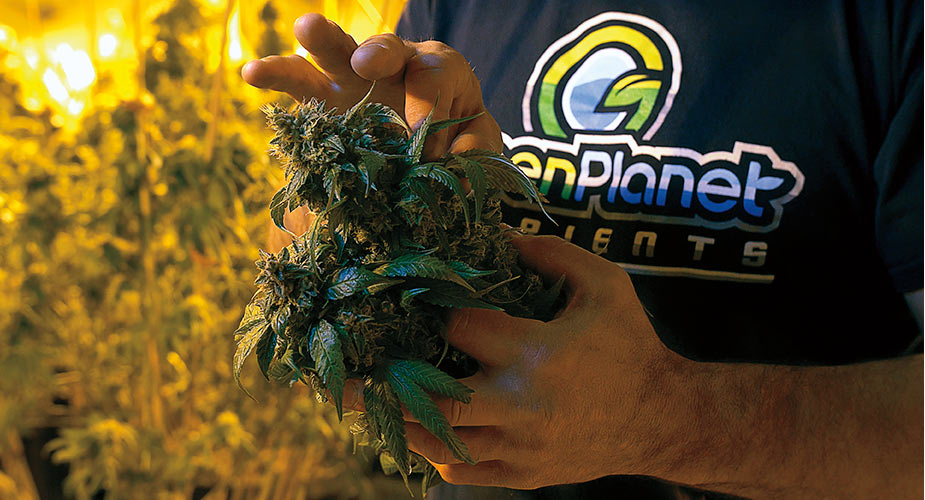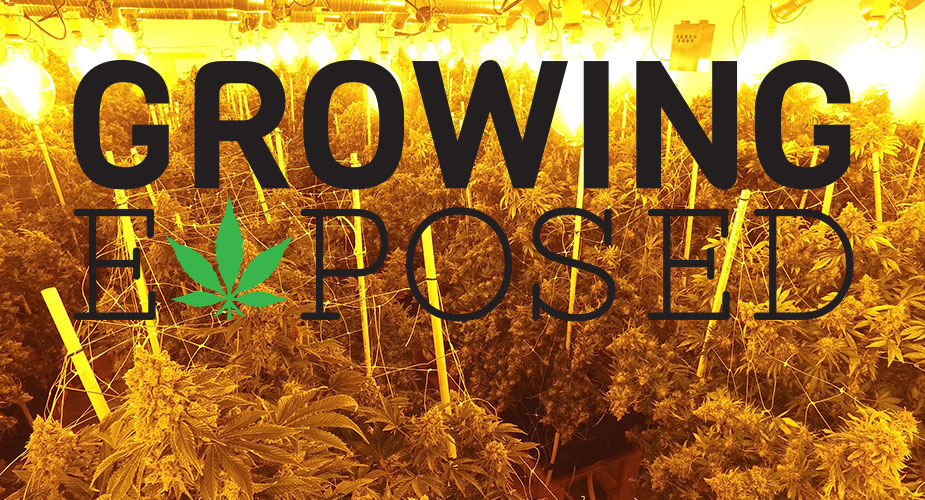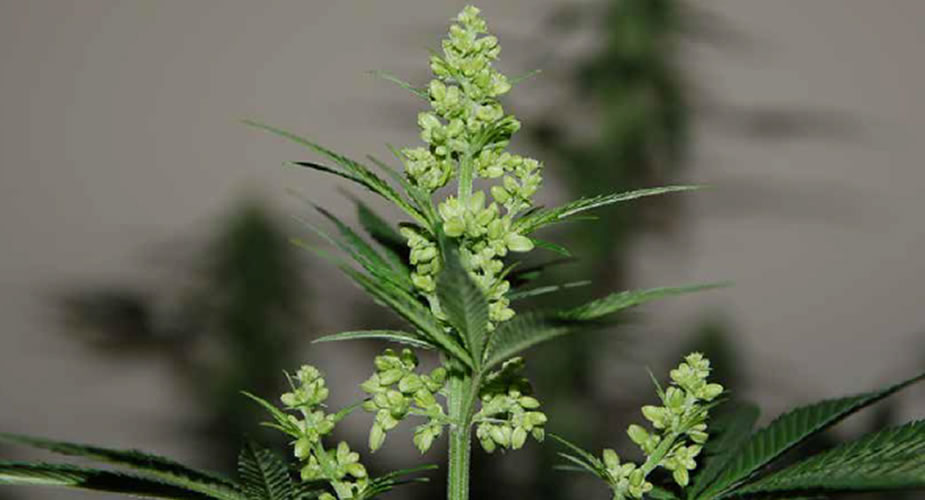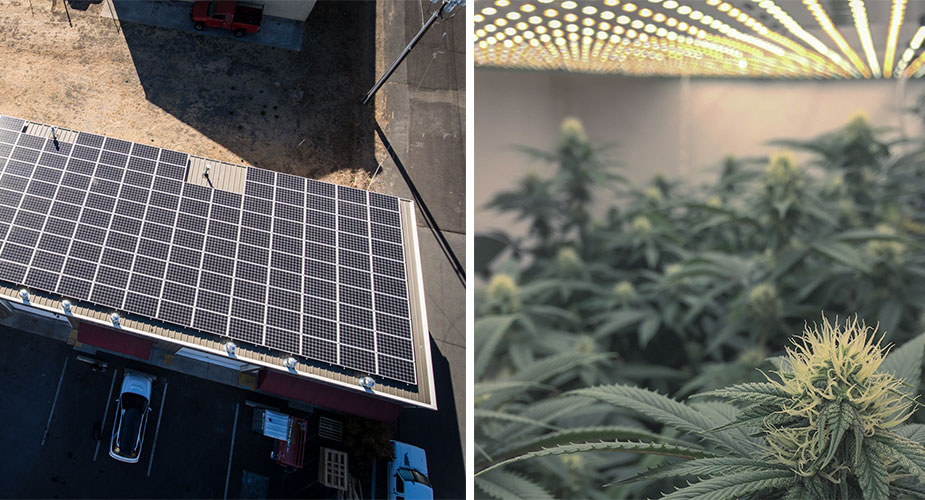Nestled amongst an old-growth forest in a remote area of British Columbia is a custom-built indoor grow operation that takes quality very seriously. Here they grow a strain called “Super Kush” under almost 300 HID lights. With great genetics, maintaining the right environment is key.
“Sometimes the simple systems are the best,” says Justin Cooper, walking next to rows of air conditioners as he approaches the entrance of the facility. “Red doors mean fortune in Chinese culture,” he tells us. Behind these red doors of solid steel is a vast fortune of green gold. But to grow the best of the best, this garden has to adhere to factors that maximize yields: temperature, genetics, and lighting.
Over three hundred HID lights produce intense heat. The room is cooled by a long row of 5-ton air conditioners that produce an astounding total of just fewer than 1 million BTUs. One vegetative room contains eighty metal halide bulbs with reflectors able to be raised and lowered by a rope-and-lever system on one side of the room. Everything is completely automated and irrigation systems are easily accessible.
As seen in the reservoir room, this grower is serious when it comes to nutrition. Justin uses GP3 from Green Planet Nutrients, which is a high-quality, clean, three-part fertilizer. With these nutrients, he ensures his plants have optimal nutrition. The fertilizer is mixed into four one-thousand-liter reservoirs that feed four separate rooms. The pH and temperatures are on-point, and the nutrient solution is nicely aerated to ensure a healthy amount of oxygen permeates the plants’ root systems.
This particular grower prioritizes air movement. Why? Because it provides many benefits. For starters, it prevents bugs, pests, mold, and mildew. But by far the most interesting, and little-known fact, is that air movement mimics the gentle breeze that plants encounter when growing outdoors. This creates a rhythmic movement that allows plants to become stronger by creating tiny cracks in the stems that repair themselves, much like human muscles. The healing process causes the plants to grow back a little stronger. The increased strength prompts and enables them to produce larger buds.
“Supply your garden with an adequate level of air movement,” says David Robinson, suggesting “one fan per light, or one fan every two lights. Don’t hammer them with air; we’re not looking for windburn, we’re looking for all the plants to appear happy and dancing in the garden.”
During the last week of flower production, this grower uses an uncommon technique to bring out gorgeous colors in his final product. He takes the temperature down to 55-60°F, which normally slows down most plant processes. However, this also accentuates the purples within the bud itself and brings out the autumn-like colors. The resulting Super Kush is extremely dense and resinous with insane trichome production, beautiful coloration, and amazing aromas.
“A lot of plants don’t give off a lot of flavor until you squeeze them and allow the terpenes to come to your nose,” says Justin as he brings a huge flower to his face. “These are sweet, very fragrant, fantastic smelling. It stinks so beautifully you’ll wish you had smell-o-vision. They’re completely snow-covered, and once they remove all the fan leaves and do the trim, this is going to be a fantastic-looking harvest.”
To watch this episode and more, go to GrowingExposed.com. Make sure to follow Growing Exposed on Facebook and Instagram for news on the latest episodes.





